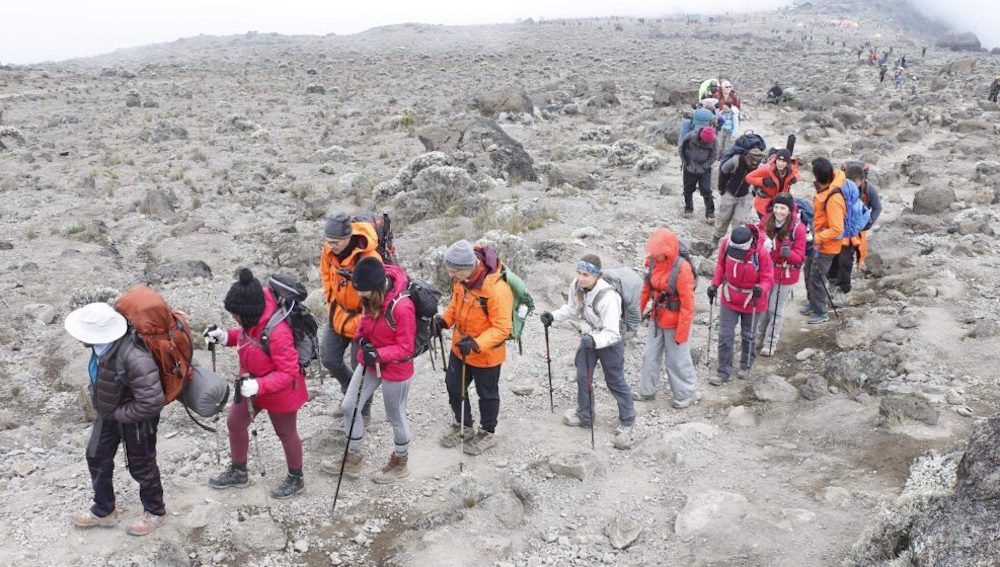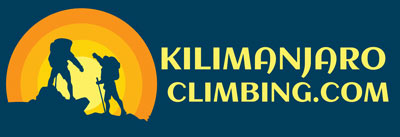Mount Kilimanjaro is the highest mountain in Africa and with the large crowds attempting the climb every year, it is best to note that this is not just a walk in the park and you need to be well prepared for the climb. Things that you need to know about Mount Kilimanjaro before climbing include the following.
Mount Kilimanjaro is the tallest mountain (free-standing) in the world. It is 5,895 meters high and as with most mountains that are part of other mighty ranges, Kilimanjaro is an isolated mountain which allows you to see it from an extremely far away distance.
It is a cod place! Know how the internet and people keep on saying that Africa is hot, well when you get to Mount Kilimanjaro, the cold that hits you is different because the moment that you get there and start elevation, the temperature keeps on dropping automatically. During the day, the sun is up and it is a bit warm as compared to the nights and that is why we advise tourists to carry both warm and light clothes for the hike.
Over 2500 people attempt to climb Mount Kilimanjaro per year and only two thirds are successful. One of the main reasons why many people fail to get to the summit is because of the altitude sickness that forces them to descend. Note that altitude sickness is real and extremely dangerous, meaning that it needs to be taken care of with immediate effect. 
Mount Kilimanjaro is not an extinct volcano but a stratovolcano, which means that the mountain is filled with rock, ash, and lava. A volcano is considered dormant if it has not erupted in over 100,000 years, and the same applies to Kibo. The last eruption on Mount Kilimanjaro was about 360,000 years ago, and climbers who take the two-hour trip around the ash pit from the crater camp get to experience the smell of sulphur when around the ash pit.
Kilimanjaro has three extinct volcanic cones: Shira (about 3962 meters high), Kibo (5895 meters), and Mawenzi (5149 meters).
The first attempt at climbing Mount Kilimanjaro was made in 1889 by Hans Mayer, a German geologist, Kinyala Yohani Lauwo, the local guide, and an Australian named Ludwig Purtscheller. The first attempt, however, was not successful because they encountered lots of snow and ice walls, which forced them to descend. Meyer tried a second time but was still not successful after being captured by the locals who were rebelling against the Germans during the Abushiri Revolt. The third successful attempt was in the year 1889, and this time Meyer attempted with the help of two local tribe leaders, a local guide, a cook, and nine porters who reached the summit from the southern side of the crater via the current Marangu route.
Any person, regardless of their age, can climb Mount Kilimanjaro, as the different old people aged 86 years in 2015 (Angela Vorobeva), 88 years in 2007 (Fred Distelhorst at the Uhuru peak), and 89 years in 2017 (Anne Lorimor) have shown. The National Park Authority has set a minimum age of 10 years for hikers up Kilimanjaro. Coaltan Tanner has so far been the youngest hiker on Kilimanjaro since his parents made a special request and obtained permission.
Mount Kilimanjaro has seven official routes that can be used to reach the summit, and climbers can use any of these routes. Note that some of these routes are not favourable, and you need to check our website about the best routes for hiking Mount Kilimanjaro. The southern routes include Umbwe, Machame, and Marangu; the northern routes include Rongai; and the western routes include the Northern Circuit, which starts from the west and circles around the North; and the Lemosho and Shira routes.
All the main routes on Mount Kilimanjaro end up at the main base camps where the summit attempt begins. There are three main routes to the summit, and these are the Western Breach, which is the most technical from the west, Stella Point from the south, and Gillman’s Point from the south (this is the most used route).
Mount Kilimanjaro has five major zones, and this is due to the fact that it lies along the equator. The journey up the mountain is like taking a walk from the equator to the North Pole. The different zones along Mount Kilimanjaro include the rainforest zone, low alpine zone, high alpine zone, and glacial zone.
Book through a local tour company to get an authentic and great experience while hiking. The Tanzanian government clearly stipulates that you must be able to hire a local guide to be able to climb Mount Kilimanjaro. Locally registered companies know the ins and outs of the mountain and the best routes to use, and for an additional cost, you can take an exclusive safari to the different national parks in Tanzania.
Make sure that you do not limit your budget when it comes to climbing Mount Kilimanjaro. The fact is that you will not find a trip below $1000, but it can go as high as $3000 or more. The fee usually includes transport, food, and accommodation, excluding personal purchases and international flights. And as you plan for the climb, please do not forget to tip the porters. Bring between $400 and $500 in cash (it is better if it is in Tanzanian shillings), as the wages paid help the porters support their families.
With a good mountain guide, you will be able to achieve acclimatization as long as you take it slowly. Hikers respond differently to altitude, with some facing severe sickness as their bodies find difficulty adjusting to the pressure. You will often hear guides say “pole-pole” which is loosely translated as “slowly-slowly (this is to make sure that you achieve acclimatization at your own pace without falling sick).
Is Mount Kilimanjaro climbing safe? Read more about how safe Mt Kilimanjaro is.
Do not forget your gear; carry all the necessary medications and a first aid kit; and if possible, pay for an optional bathroom that will be located outside your tent.

Comments